今天为大家分享一篇基于人工智能方法对帕金森病进行诊断的综述型论文——A Systematic Review of Artifcial Intelligence (AI) Based Approaches for the Diagnosis of Parkinson’s Disease(基于人工智能(AI)的帕金森病诊断方法的系统综述)。该论文发表于ARCHIVES OF COMPUTATIONAL METHODS IN ENGINEERING期刊,影响因子为8.171,JCR分区为Q1。

原文链接:https://doi.org/10.1007/s11831-022-09710-1
Abstract
Parkinson’s disease (PD) is a neurodegenerative disorder that primarily affects the elderly for over 55 years. PD can be characterised by patients exhibiting various non-motor and motor symptoms. It is significant to note that even though modern-day medical technology has grown exponentially over the years, there is still no cure for Parkinson’s disease. Hence, it is a scientifically exciting proposal to develop technologies that diagnose Parkinson’s disease earlier. Early diagnosis of PD can enhance the patient’s quality of life to a reasonable extent, as the disease’s nature is progressive, and it may take years to cripple the patient. It is also essential to observe that the symptoms will get intensified over time. Early diagnosis can also predict other types of neurodegenerative diseases, as the symptoms are pretty similar. The idea of Artificial Intelligence (AI) techniques is recently getting significant medical diagnosis attention, as these technologies can process massive data and come up with good statistical predictions. This study presents a detailed review of various machine learning and deep learning-based AI techniques applied to PD diagnosis and their impact in opening up newer research avenues. Furthermore, this paper explores the possible opportunities of data-driven AI technologies in PD diagnosis and its current status.
帕金森病是一种进展性的神经性疾病,病情通常持续数年,症状会随着时间的推移而加重。对帕金森病进行早期诊断可以在一定程度上提高患者的生活质量,因此,帕金森病的早期诊断一直是科学上研究的重点。传统上,帕金森病的诊断主要是基于患者的病史,医生通过评估患者的体征和症状做出诊断。随着人工智能技术的发展,AI在医疗领域的应用越来越广泛,通过AI处理大量医学数据并做出统计预测也受到更多重视。如图1所示,近些年来基于机器学习和深度学习技术诊断帕金森病的文章数量正在稳步增加。
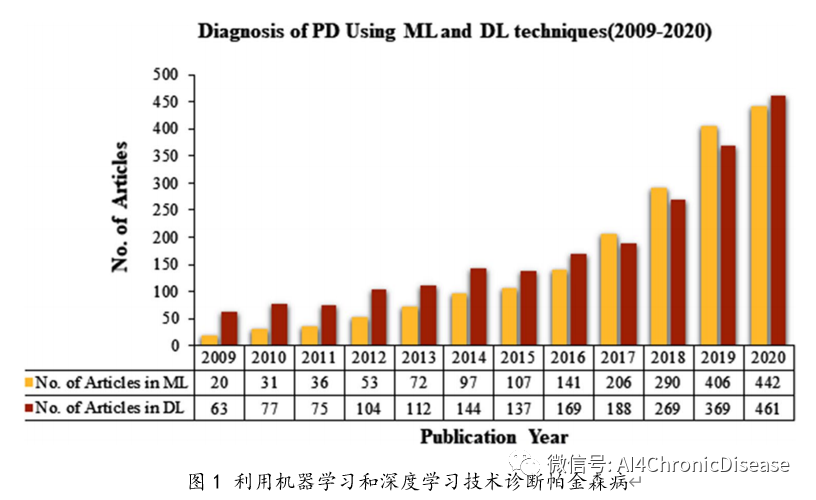
本文工作主要如下:
1.本文总结了传统机器学习技术的贡献,并系统地回顾了新兴的技术,如基于深度学习的诊断帕金森病的方法。
2.强调了研究人员所使用的特征提取和特征选择方法的类型,因为它们在提高PD诊断的准确性方面起着至关重要的作用。
3.研究所使用的数据集类型和大小也非常重要,将改进机器学习和深度学习技术的预测性能。
4.这篇综述论文可以为未来通过各种基于人工智能的模式开发帕金森病预测模型的研究者提供有价值的来源。
1. 现有的研究中使用机器学习和深度学习技术来诊断帕金森病(PD)基于不同模态的数据,如图2所示。数据主要包括:利用人类生理信号诊断;基于神经影像学技术诊断;其他模态。
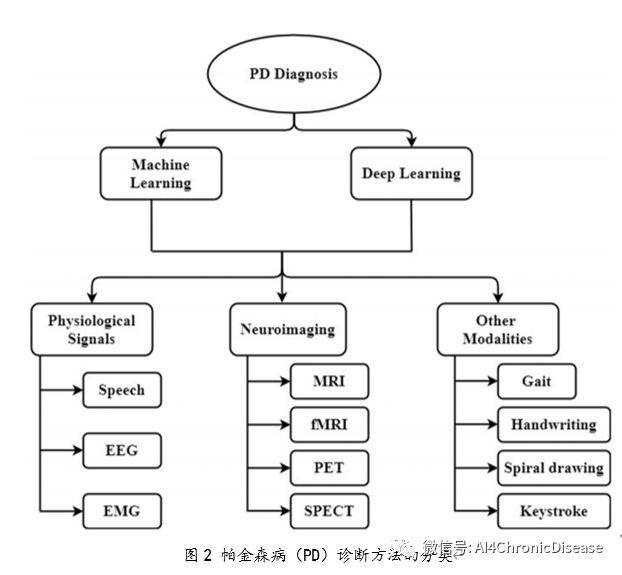
2.在其他模态数据研究中,Kour等人[1] 对如何利用人类步态信息来提高决策能力进行了系统的回顾。Pereira等[2]提出了一种基于Hand PD数据集的预测模型来识别PD患者和健康受试者的差异。Printy等人[3]通过分析手指敲击测试(FTT)过程中运动学数据开发了一款iPhone应用程序,以区分PD患者和健康对照组,并预测疾病的进展。图3中总结了基于其他模态数据使用机器学习技术来诊断帕金森病的方法。
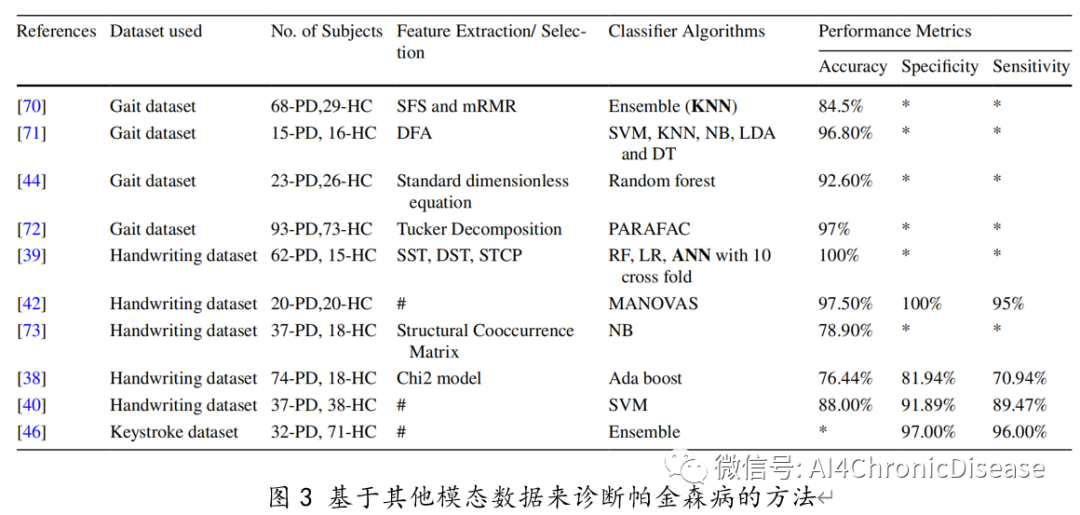
3. 本文作者调查了大部分现有的深度学习技术,总结出一些受欢迎的深度学习方法,Gautam等人[4]回顾了诊断神经系统疾病的深度学习技术。Zhao等人[5]推荐了一种基于步态信息的帕金森病进展的时空混合预测模型,采用LSTM网络来评价力的空间分布,采用CNN来检验力的时间分布。Wan等人[6]创新性地使用智能手机在同一天的不同时间获得的加速度计信号来预测帕金森病(PD)的进展。这项研究基于加州大学欧文分校的数据集,评估了他们的言语和运动模式。
Anju等人[7]指出,智能手机可以使用深度多层感知器技术预测帕金森病。在智能手机的帮助下,就有可能捕捉到这个人的运动,从而区分PD患者和健康人。图4总结了使用深度学习技术来诊断帕金森病的方法。
4. 挑战和问题
①收集患者的现实生活数据是最具挑战性的医疗任务。在大多数情况下,获得的任何神经退行性疾病的医疗数据集都是不平衡的。处理不平衡的数据集是非常具有挑战性的,因为它会使输出产生偏差。
②由于深度学习技术与自然启发技术融合后的发展,使用多模态数据集来提高PD的预测精度还有一个潜在的空间。
③在PD分类中,为评价ML模型的性能选择指标是至关重要的,目前大多数文章都将准确性(accuracy)、特异性(specificity)和敏感性(sensitivity)作为验证所开发的PD分类模型性能的指标。探索不同的指标具有潜在意义。
本研究回顾了一些基于机器学习和深度学习诊断帕金森病(PD)的方法的研究,也展望了基于人工智能的PD诊断技术的未来研究方向。由于症状相似性,这些方法也可以用于预测其他类型的神经退行性疾病。此外,智能手机在未来将发挥至关重要的作用,因为研究人员开始探索移动健康技术以观察患者在家里的日常活动,这似乎是一个具有潜力的方向。
[1] Kour N, Arora S. Computer-vision based diagnosis of Parkinson’s disease via gait: A survey[J]. IEEE Access, 2019, 7: 156620-156645.
[2] Pereira C R, Pereira D R, Rosa G H, et al. Handwritten dynamics assessment through convolutional neural networks: An application to Parkinson’s disease identification[J]. Artificial intelligence in medicine, 2018, 87: 67-77.
[3] Printy B P, Renken L M, Herrmann J P, et al. Smartphone application for classification of motor impairment severity in Parkinson’s disease[C]//2014 36th Annual International Conference of the IEEE Engineering in Medicine and Biology Society. IEEE, 2014: 2686-2689.
[4] Gautam R, Sharma M. Prevalence and diagnosis of neurological disorders using different deep learning techniques: a meta-analysis[J]. Journal of medical systems, 2020, 44(2): 1-24.
[5] Zhao A, Qi L, Li J, et al. A hybrid spatio-temporal model for detection and severity rating of Parkinson’s disease from gait data[J]. Neurocomputing, 2018, 315: 1-8.
[6] Wan S, Liang Y, Zhang Y, et al. Deep multi-layer perceptron classifier for behavior analysis to estimate Parkinson’s disease severity using smartphones[J]. IEEE Access, 2018, 6: 36825-36833.
[7] Anju P, Varghese A, Roy A, et al. Recent survey on Parkinson disease diagnose using deep learning mechanism[C]//2020 2nd International Conference on Innovative Mechanisms for Industry Applications (ICIMIA). IEEE, 2020: 340-343.
免责声明:本公众号推送文章仅用于学术交流,如若有侵权请联系修改或删除。
点击左下角的阅读原文,可查看文献全部内容。




 ai论文写作
ai论文写作

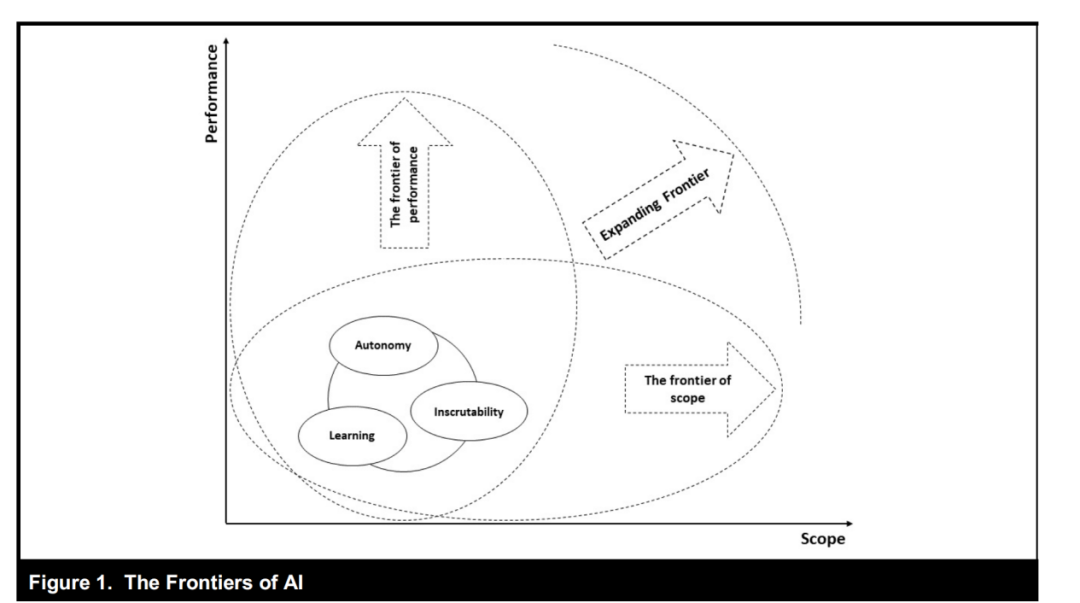


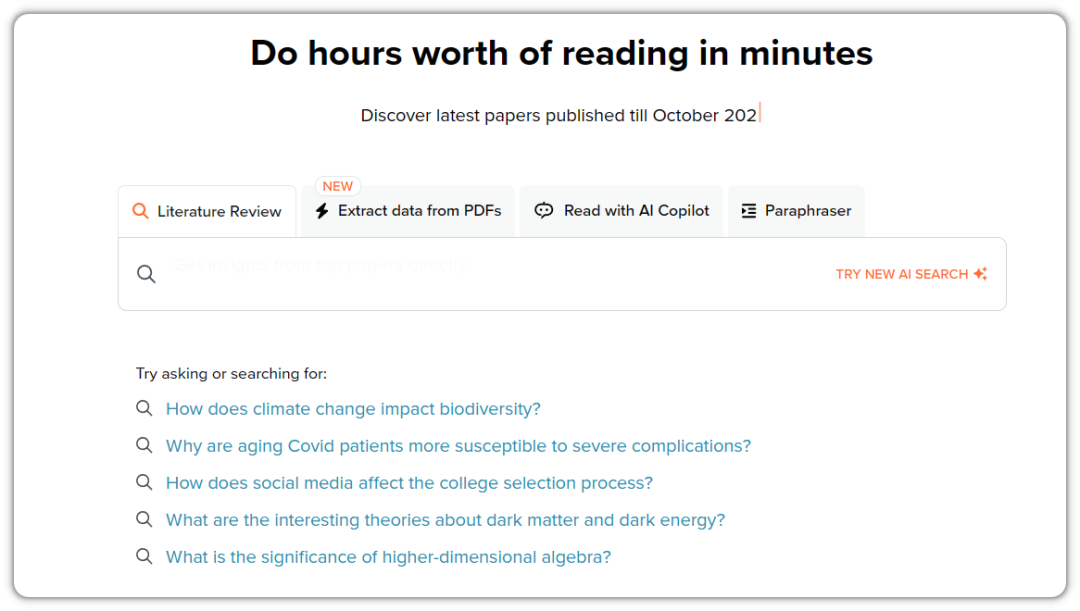


评论前必须登录!
立即登录 注册